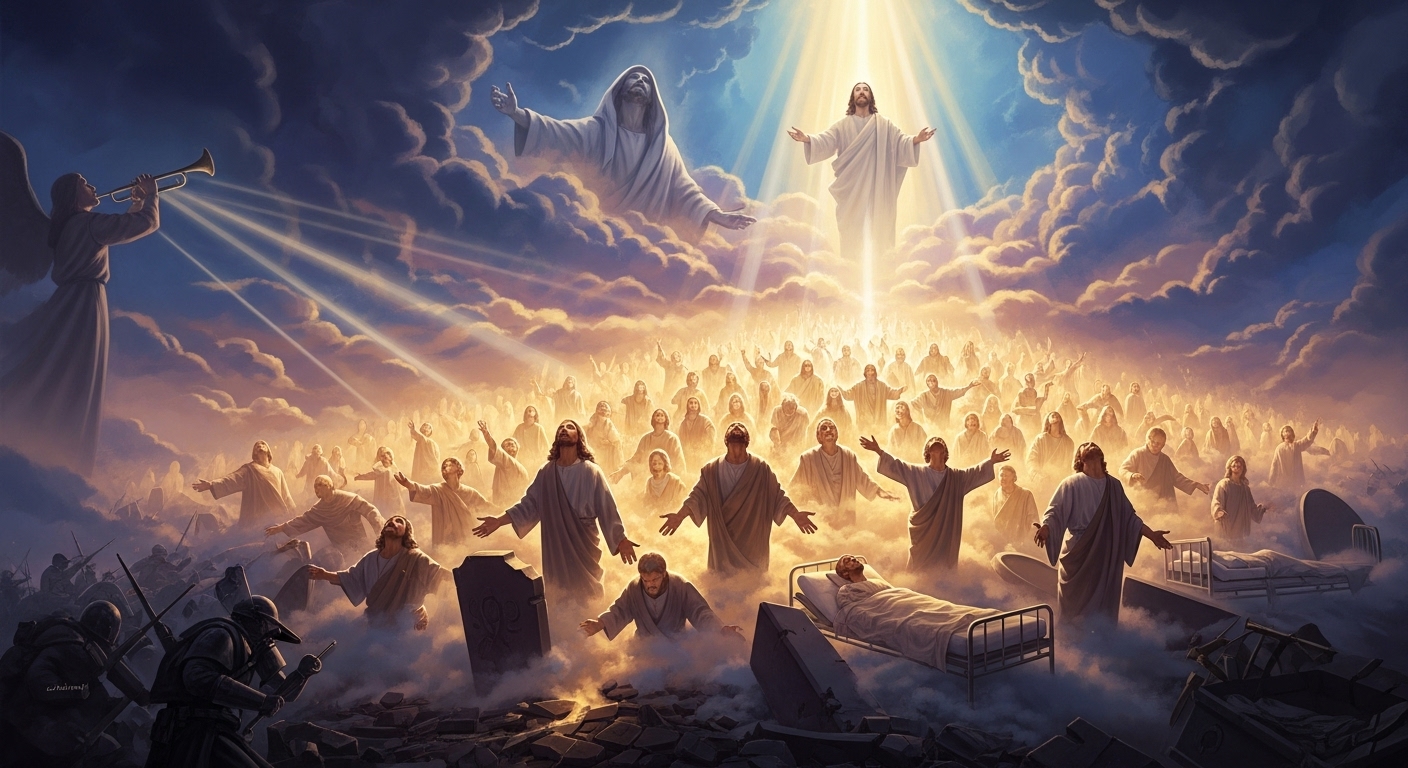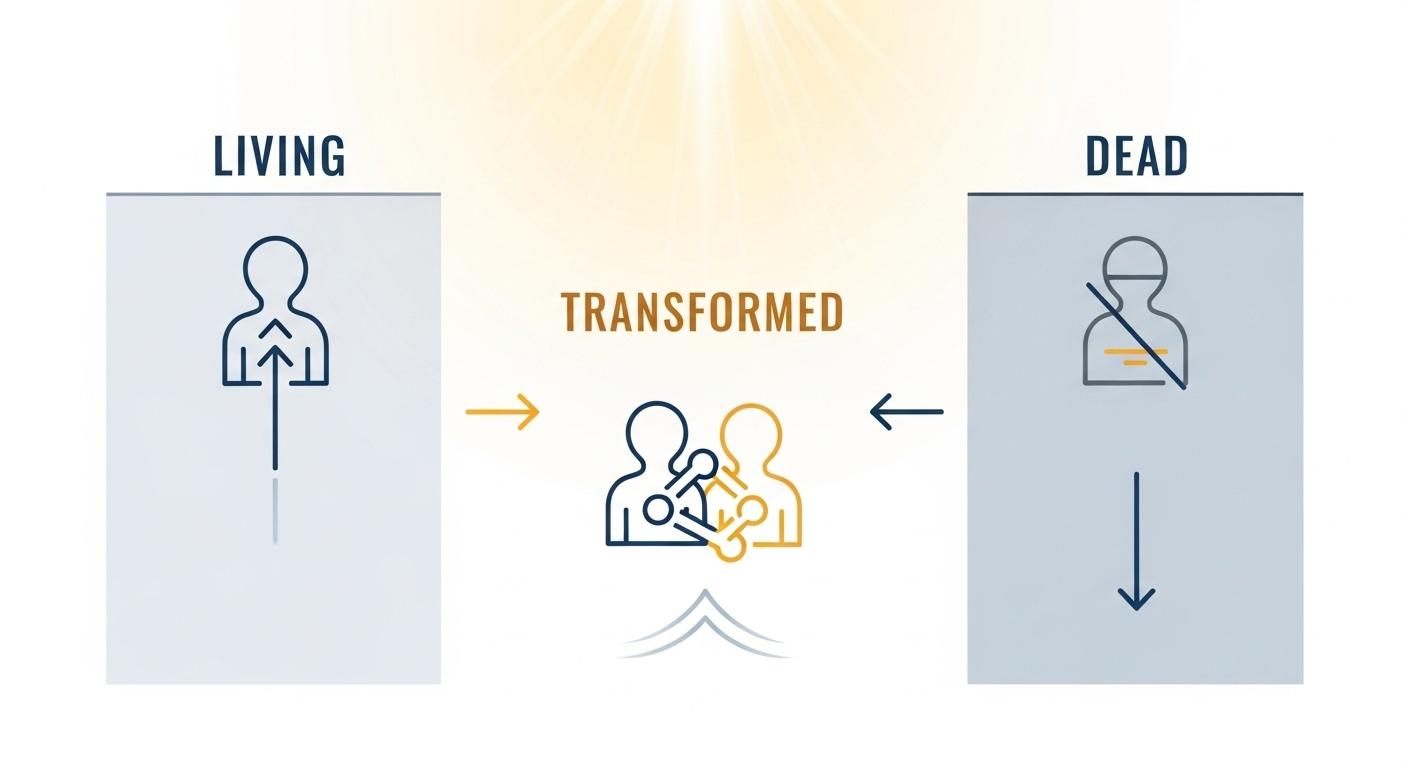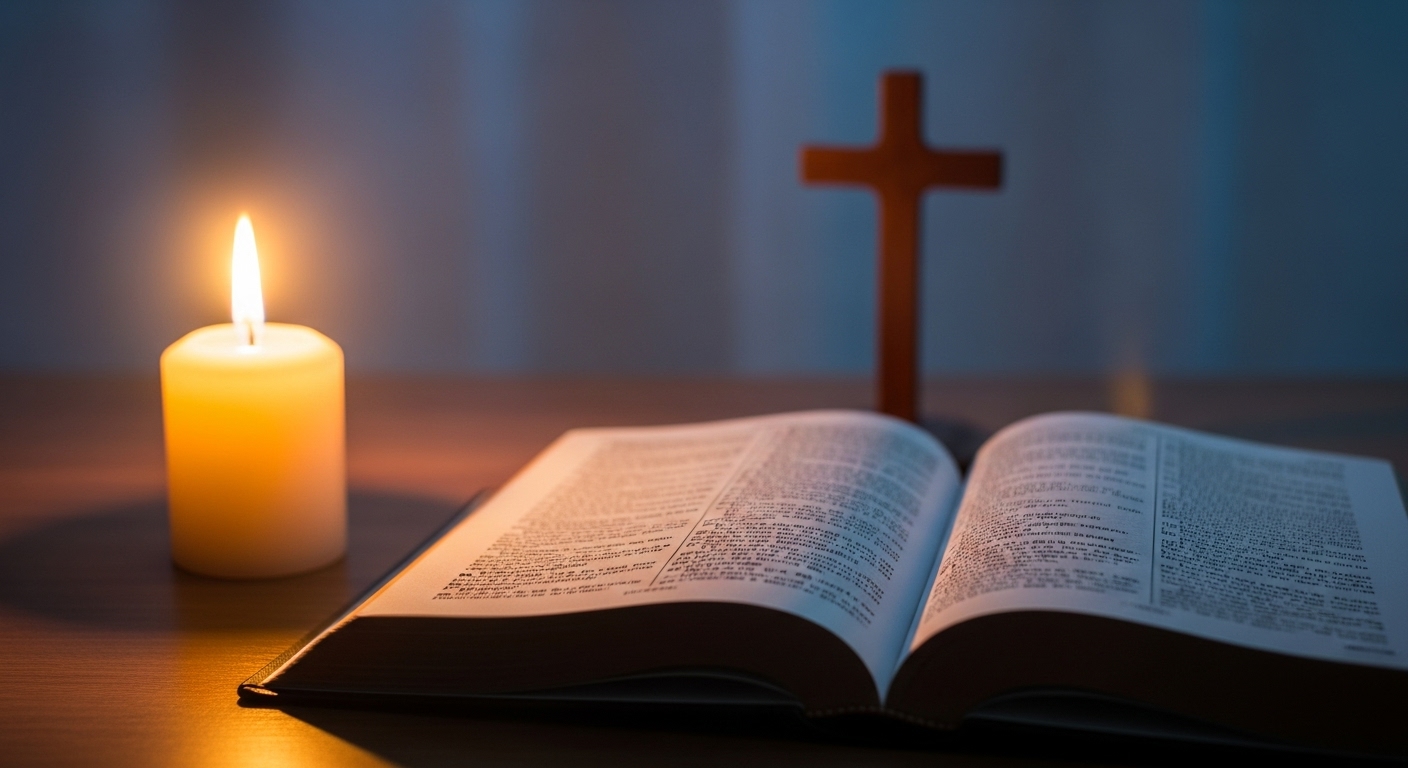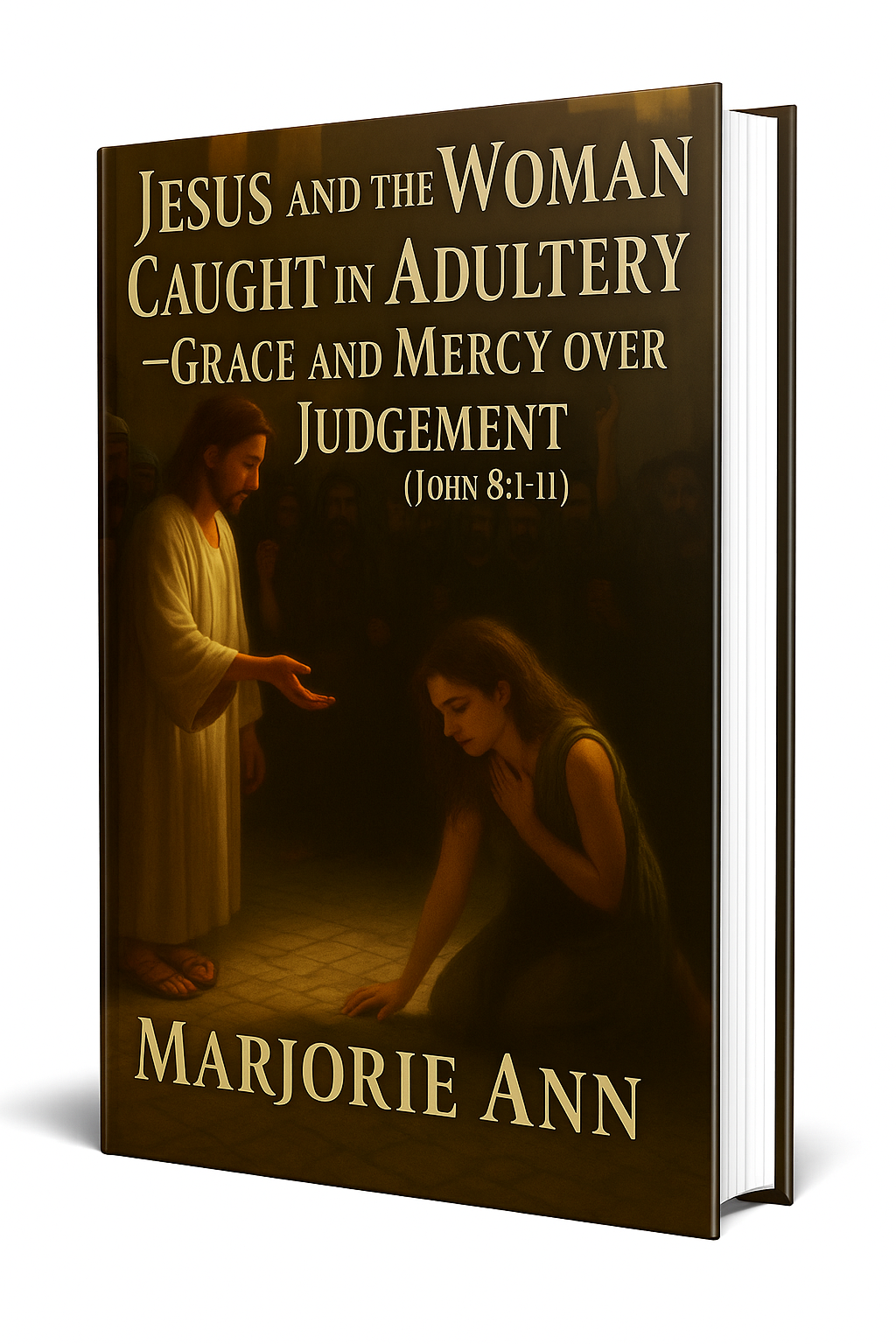What Is The Resurrection Of The Dead? (1 Thessalonians 4:16-17)

Introduction
Have you ever wondered what happens after death? Maybe you’ve lost someone you love and you catch yourself asking, “Will I see them again?” You’re not alone. Questions about life after death, justice, and ultimate hope have followed humans across generations. When you read 1 Thessalonians 4:16-17, Paul offers a vivid promise that has comforted countless Christians: the dead in Christ will be raised, and those who are alive will be transformed and gathered with them. This teaching—the Resurrection of the Dead—matters deeply for how you grieve, hope, and live today. In this article, you’ll explore what this promise means, why it matters, and how it should shape your everyday faith.
📖 The Bible Foundation
Here’s the passage at the center of our exploration. Read it slowly and let its words sink in:
“For the Lord himself will come down from heaven, with a loud command, with the voice of the archangel and with the trumpet call of God, and the dead in Christ will rise first. After that, we who are still alive and are left will be caught up together with them in the clouds to meet the Lord in the air. And so we will be with the Lord forever.”

This passage comes from Paul’s letter to the Thessalonian church, a congregation shaken by persecution and worried about believers who died before Christ returned. Paul writes to assure them: death is not the end. He paints a picture of Christ’s return, a trumpet sound, and a gathering—comforting language designed to remove fear and replace it with hope.
Understanding the Core Truth
At its simplest, the Resurrection of the Dead means that God will raise believers who have died and transform living believers so that all will be with Christ forever. You’re not left with a vague wish or wishful thinking; Paul describes a concrete future act: a personal return of Jesus, a loud command, and a raising of the dead in Christ.
Why is this core truth important? Because it reframes death not as ultimate defeat but as a passage into God’s keeping. For you, that means grief is real and painful, but it’s shadowed by the promise of reunion. It also changes your moral vision: if there is a final restoration, then justice, healing, and redemption have a future fulfillment in God’s hands.

Going Deeper — The Hidden Meaning
Beneath the surface of the promise is a deeper theological truth: resurrection is not merely resuscitation. It’s a transformation. In Paul’s letters, he contrasts the body “as it is” with the body “as it will be” (see 1 Corinthians 15). The Resurrection of the Dead signals that God will remake creation, starting with human beings. Your relationships, personality, and memories will not be erased; rather, they’ll be gloriously redeemed in a way that fits God’s perfected kingdom.
Think of a seed becoming a tree. The seed doesn’t disappear; it fulfills its purpose by becoming something greater. When Jesus raised Lazarus, it foreshadowed God’s power to restore life (see John 11:25–26). The deeper lesson is this: death is a transition God can and will redeem. That reshapes how you hope, grieve, and hold to the promise that God makes all things new.
Modern Connection — Relevance Today

How does this ancient promise matter where you live—at work, with your family, in your quiet, anxious moments? First, it gives your grief a trajectory. Instead of getting stuck in despair, you can orient your mourning toward hope—confidence that separation isn’t final. Second, the Resurrection of the Dead fuels your courage to face injustice. If God is the One who will ultimately set things right, then your acts of mercy and justice today are seeds planted into that larger story.
Beyond grief and justice, it shapes everyday living: it invites you to value people eternally, to invest in spiritual growth, and to hold possessions and worries lightly. You’re living with the expectation that one day, every tear will be wiped away. That expectation influences how you forgive, how you show love, and how you prioritize what truly matters.
Practical Application — Living the Message
You don’t need a theology degree to apply this truth; here are simple ways you can live in light of the Resurrection of the Dead:
- Anchor your grief in community: share your story and your hope with trusted friends or a church group. Grief paired with the gospel becomes both honest and hopeful.
- Practice hope-driven decisions: when making long-term choices—how you invest time, money, and love—let eternity shape your priorities.
- Serve with perspective: acts of kindness and justice matter now and echo into the new creation God promises.
- Pray for those who mourn: your prayers bring comfort and remind you of God’s presence.
These steps are small, but they keep your heart tethered to the future God promises while you live faithfully today.
🌿 Faith Reflection Box
Pause for a moment and ask yourself: How does believing in the Resurrection of the Dead change the way I grieve, forgive, and live today? Sit with that question in prayer—let it guide a practical step you’ll take this week.
Key Takeaways
- The Resurrection of the Dead means God raises and transforms believers for eternal life.
- This promise offers deep comfort for grief and fuels a hopeful, justice-minded life.
- Living in light of resurrection changes your priorities, relationships, and daily decisions.
Q&A
Q1: Does 1 Thessalonians 4:16-17 mean Christians will just float away into heaven? Answer: No. Paul uses imagery—trumpet, clouds, meeting in the air—to convey the reality of being gathered to Christ. It’s metaphorical language to describe a real transformation and reunion, not a literal flight to a distant sky. The emphasis is on being with the Lord forever, in a renewed creation where your body and soul are made complete. For a related reflection on hope and prayer in grief, you might read: https://biblestorieshub.com/how-to-pray-for-peace-when-your-mind-feels-overwhelmed/. Also see Romans 8:11 about God’s life-giving Spirit.
Q2: Will you recognize loved ones after the resurrection? Answer: Scripture gives reason to hope that recognition and relationship will continue. Paul’s image of reunion implies continuity, not meaningless sameness. Think of restoration—memory, identity, and love are redeemed rather than erased. Jesus’ personal relationships after resurrection suggest both continuity and transformation (see Luke 24). While the exact mechanics remain a mystery, the heart of the promise is relational: God restores what is good in the people you love.
Q3: What should you tell someone who fears death? Answer: Start with empathy—acknowledge their fear. Then point them gently to the promise that death is not the end for those in Christ. Explain that the Resurrection of the Dead means God’s power to conquer death and to gather God’s people. Encourage them to explore Scripture and community; sometimes the best remedy for fear is shared hope. Suggest simple spiritual steps—prayer, reading passages like 1 Thessalonians 4:16-17, and talking with a pastor or a trusted friend who lives in that hope.
Q4: How does believing in the resurrection change your work and daily life? Answer: Belief in resurrection shifts your horizon from short-term gain to eternal significance. It helps you invest in relationships, justice, and mercy because those things matter in God’s economy. You’ll likely find yourself less consumed by materialism and more open to sacrificial love. Practically, it can mean volunteering, forgiving more readily, or choosing integrity over easy gain—because you’re living in the light of the life to come.
Conclusion & Reflection
You’ve walked through a powerful promise: the Resurrection of the Dead as explained in 1 Thessalonians 4:16-17. This truth brings comfort for your grief, courage for your days, and a horizon that lifts you above fear. Remember—this promise centers on Jesus: his return, his power over death, and his desire to gather you and those you love. Hold that hope close. Pray this short prayer with me:
Lord Jesus, thank you that death does not have the last word. Help me live with resurrection hope—comfort the grieving, steady my heart, and teach me to love as you do. Amen.

More Inspiration Awaits — Read These Next
👉 For deeper insight into Isaiah 40:31 and how it renews your strength in both faith and daily life
👉 For practical lessons on compassion and neighborliness from the Good Samaritan
👉 For a clear explanation of what we can learn from the Parable of the Good Samaritan
👉 For meaningful insights from the Parable of the Pearl and its hidden treasures
👉 For a deeper look at the Rich Man and Lazarus and what it reveals about the afterlife
👉 For guidance on the Parable of the Ten Virgins and preparing for God’s Kingdom
👉 For clarity on the Parable of the Lamp and how it calls us to shine our light
👉 For insights from the Parable of the Wedding Feast and the meaning behind the invited guests

📘 Jesus and the Woman Caught in Adultery – Grace and Mercy Over Judgement
A powerful retelling of John 8:1-11. This book brings to life the depth of forgiveness, mercy, and God’s unwavering love.
👉 Check it now on Amazon 🛒💥
🔥 “Every great message deserves a home online.” 🌍💬🏡
Don’t let your calling stay hidden. Start a Christian blog or website using Hostinger — with 99.9% uptime, a free domain, and SSL, your voice can shine for God’s glory anytime, anywhere.
💥 Begin today. 🛒 Try it RISK-FREE! ✅
✝️ “Your body is God’s temple — care for it with purpose.” 💪💖🏛️
Renew your energy and restore balance naturally. Mitolyn helps support a healthy metabolism, giving you the vitality to live out God’s calling with strength and confidence.
🔥 Unlock Your Metabolic Power! ⚡Burn More Calories & Feel Great With Mitolyn. 💪
👉 Start Today. 🚀 Check Price Now. 🛒💰
💰 As a ClickBank & Amazon Affiliate, I earn from qualifying purchases.
📖 Acknowledgment: All Bible verses referenced in this article were accessed via Bible Gateway (or Bible Hub).
🚀 Want to explore more? 👉 Dive into our new post on Why Jesus? and experience the 🔥 life-changing truth of the Gospel!




